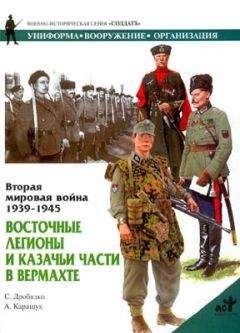Тьерри Мейссан - 11 сентября 2001
Figure 2-2 Representative structural framing plan, upper floors.
The buildings' signature architectural design feature was the vertical fenestration, the predominant element of which was a series of closely spaced built-up box columns. At typical floors, a total of 59 of these perimeter columns were present along each of the flat faces of the building. These columns were built up by welding four plates together to form an approximately 14-inch square section, spaced at 3 feet 4 inches on center. Adjacent perimeter columns were interconnected at each floor level by deep spandrel plates, typically 52 inches in depth. In alternate stories, an additional column was present at the center of each of the chamfered building corners. The resulting configuration of closely spaced columns and deep spandrels created a perforated steel bearing-wall frame system that extended continuously around the building perimeter.
Figure 2-3 Partial elevation of exterior bearing-wall frame showing exterior wall module construction.
Figure 2-3 presents a partial elevation of this exterior wall at typical building floors. Construction of the perimeter-wall frame made extensive use of modular shop prefabrication. In general, each exterior wall module consisted of three columns, three stories tall, interconnected by the spandrel plates, using all-welded construction. Cap plates were provided at the tops and bottoms of each column, to permit bolted connection to the modules above and below. Access holes were provided at the inside face of the columns for attaching high-strength bolted connections. Connection strength varied throughout the building, ranging from four bolts at upper stories to six bolts at lower stories. Near the building base, supplemental welds were also utilized.
Side joints of adjacent modules consisted of high-strength bolted shear connections between the spandrels at mid-span. Except at the base of the structures and at mechanical floors (Figure 2-8 shows one of these mechanical floors. Note that all the perimeter wall columns are joined/spliced at this one level.) horizontal splices between modules were staggered in elevation so that not more than one third of the units were spliced in any one story. Where the units were all spliced at a common level, supplemental welds were used to improve the strength of these connections. Figure 2-3 illustrates the construction of typical modules and their interconnection. At the building base, adjacent sets of three columns tapered to form a single massive column, in a fork-like formation, shown in Figure 2-4.
Figure 2-4 Base of exterior wall frame.
Twelve grades of steel, having yield strengths varying between 42 kips per square inch (ksi) and 100 ksi, were used to fabricate the perimeter column and spandrel plates as dictated by the computed gravity and wind demands. Plate thickness also varied, both vertically and around the building perimeter, to accommodate the predicted loads and minimize differential shortening of columns across the floor plate. In upper stories of the building, plate thickness in the exterior wall was generally 1/4 inch. At the base of the building, column plates as thick as 4 inches were used. Arrangement of member types (grade and thickness) was neither exactly symmetrical within a given building nor the same in the two towers. One would definitely be interested in the arrangement of member types, especially whether or not the perimeter wall had columns with say, 2 inch thickness, regularly interspersed among those of 1/4 inch thickness. These would then form the frame of a regular steel-framed building.
The stiffness of the spandrel plates, created by the combined effects of the short spans (Not true. To obtain the required stiffness, the spandrel plates were bolted together to form a very long span. In fact, they spanned right around the building.) and significant depth (True.) created a structural system that was stiff both laterally and vertically. Under the effects of lateral wind loading, the buildings essentially behaved as cantilevered hollow structural tubes with perforated walls. Just think of the perimeter wall as a massive box column, with hundreds of small holes cut in it. In each building, the windward wall acted as a tension flange for the tube while the leeward wall acted as a compression flange. The side walls acted as the webs of the tube, and transferred shear between the windward and leeward walls through Vierendeel action (Figure 2-5).
Figure 2-5 Structural tube frame behavior.
Vierendeel action occurs in rigid trusses that do not have diagonals. In such structures, stiffness is achieved through the flexural (bending) strength of the connected members. In the lower seven stories of the towers, where there were fewer columns (Figure 2-4), vertical diagonal braces were in place at the building cores to provide this stiffness. This structural frame was considered to constitute a tubular system.
Floor construction typically consisted of 4 inches of lightweight concrete on 1-1/2-inch, 22-gauge non-composite steel deck. In the core area, slab thickness was 5 inches. Remember, that it is important for the «official line» that there be a discontinuity between «inside the core» and «outside the core». Hence, the 5 inch slab inside the core and 4 inch slab outside the core. Outside the central core, the floor deck was supported by a series of composite floor trusses that spanned between the central core and exterior wall. I claim that this is nonsense, see the article The World Trade Center Demolition. Composite behavior with the floor slab was achieved by extending the truss diagonals above the top chord so that they would act much like shear studs, as shown in Figure 2-6.
Figure 2-6 Floor truss member with detail of end connections.
Detailing of these trusses was similar to that employed in open-web joist fabrication and, in fact, the trusses were manufactured by a joist fabricator, the LaClede Steel Corporation. However, the floor system design was not typical of open-web-joist floor systems. It was considerably more redundant and was well braced with transverse members. Trusses were placed in pairs, with a spacing of 6 feet 8 inches and spans of approximately 60 feet to the sides and 35 feet at the ends of the central core. Why would anyone place pairs of trusses at 6 feet 8 inch intervals, when the trusses could be placed regularly at 3 feet 4 inch intervals, at no extra cost and greatly increased stability? Metal deck spanned parallel to the main trusses and was directly supported by continuous transverse bridging trusses spaced at 13 feet 4 inches and intermediate deck support angles spaced at 6 feet 8 inches from the transverse trusses. The combination of main trusses, transverse trusses, and deck support enabled the floor system to act as a grillage to distribute load to the various columns.
At the exterior wall, truss top chords were supported in bearing off seats extending from the spandrels at alternate columns. Welded plate connections with an estimated ultimate capacity of 90 kips (refer to Appendix B) tied the pairs of trusses to the exterior wall for out-of-plane forces. At the central core, trusses were supported on seats off a girder that ran continuously past and was supported by the core columns. Nominal out-of-plane connection was provided between the trusses and these girders.
Figure 2-7 Shows the erection of prefabricated components, forming exterior wall and floor deck units.
This is a view from the North Tower, looking north toward the Empire State Building. Note the yellow and red lines in the concrete. What are these? Note, in particular, the three V-shaped features in/on the concrete, along the north wall (but not along the west wall).
Figure 2-8 Shows the erection of floor framing during original construction.
This is another view from the North Tower (looking north west). The other high-rise is the Verizon building. Note the vertical gaps in the box columns of the perimeter wall. Gaps in the box columns do not seem to be a sensible feature in a supposedly load bearing wall. Is this because the perimeter wall was not required to carry much of the weight of the building, but was mainly a feature designed to give the WTC its required rigidity (against wind loading)? Notice the three parallel light-colored lines (about 4 inches wide) in the concrete. One also wonders why the pile of steel in the foreground was hoisted up the building, unless it was to be incorporated in the structure.
These figures illustrate this construction, and Figure 2-9 shows a cross-section through typical floor framing. Floors were designed for a uniform live load of 100 pounds per square foot (psf) over any 200-square-foor area with allowable live load reductions taken over larger areas. At building corners, this amounted to a uniform live load (unreduced) of 55 psf.
At approximately 10,000 locations in each building, viscoelastic dampers extended between the lower chords of the joists and gusset plates mounted on the exterior columns beneath the stiffened seats (Detail A in Figure 2-6). I find it really strange that dampers are attached to only one end of each truss. It doesn't make much sense to dampen vibration at one end while letting the other end «blow in the breeze». These dampers were the first application of this technology in a high-rise building, and were provided to reduce occupant perception of wind-induced building motion.
Figure 2-2 Representative structural framing plan, upper floors.
You may wish to compare the above floor plan with this one taken from Godfrey, GB (Editor); Multi-Storey Buildings in Steel, Second Edition; Collins, London, England,1985, ISBN 0 00 383031 4. The differences are quite telling.
Figure 2-2-A Structural system for typical floor.
The numbers in the figure denote:
13 – Perimeter frame
14 – Bar joists 900 mm deep
15 – Secondary joists
16 – Horizontal floor bracing
17 – Core box columns
That the second floor plan is more accurate than the first, is plain from the above photo where the diagonal brace members (the V-shaped features in the diagrams) are clearly visible in the concrete along the north wall, but not along the west wall (as in the second diagram but not the first).
Pairs of flat bars extended diagonally from the exterior wall to the top chord of adjacent trusses (this is puzzling, as the top chords of the trusses are set in the concrete slab, yet one can clearly see these bars on the concrete surface in the above mentioned photo). These diagonal flat bars, which were typically provided with shear studs, provided horizontal shear transfer between the floor slab and exterior wall, as well as out-of-plane bracing for perimeter columns not directly supporting floor trusses (Figure 2-2).
The core consisted of 5-inch concrete fill on metal deck supported by floor framing of rolled structural shapes, in turn supported by a combination of wide flange shape and box-section columns. Some of these columns were very large, with cross-sections measuring 14 inches wide by 36 inches deep. In upper stories, these rectangular box columns transitioned into heavy rolled wide flange shapes (see Appendix B for a picture of the transition from box column to H-column).
Between the 106th and 110th floors, a series of diagonal braces were placed into the building frame. These diagonal braces together with the building columns and floor framing formed a deep outrigger truss system that extended between the exterior walls and across the building core framing. A total of 10 outrigger truss lines were present in each building
Figure 2-10 Outriger truss system at tower roof.
(Figure 2-10), 6 extending across the long direction of the core and 4 extending across the short direction of the core. This outrigger truss system provided stiffening of the frame for wind resistance, mobilized some of the dead weight supported by the core to provide stability against wind-induced overturning, and also provided direct support for the transmission tower on WTC 1. Although WTC 2 did not have a transmission tower, the outrigger trusses in that building were also designed to support such a tower.
Figure 2-11. Location of subterranean structure.
A deep subterranean structure was present beneath the WTC Plaza (Figure 2-11) and the two towers. The western half of this substructure, bounded by West Street to the west and by the 1/9 subway line that extends approximately between West Broadway and Greenwich Street on the east, was 70 feet deep and contained six subterranean levels. The structure housed a shopping mall and building mechanical and electrical services, and it also provided a station for the PATH subway line and parking for the complex.
Above, is a photo of the area shaded in blue, in Figure 2-11 (looking north). In the foreground, are the foundations for the central core of the South Tower. The North Tower can be seen on the left further back. Two subway lines can be seen crossing the site (the two bridge-like structures). The site extended from West Street in the west to the old extention of Greenwich Street in the east (which was ripped up to make way for WTCs 4 and 5) and from Vesey Street in the north to Liberty Street in the south.
Prior to construction, the site was underlain by deep deposits of fill material, informally placed over a period of several hundred years to displace the adjacent Hudson River shoreline and create additional usable land area. In order to construct this structure, the eventual perimeter walls for the subterranean structure were constructed using the slurry wall technique. After the concrete wall was cured and attained sufficient strength, excavation of the basement was initiated. As excavation proceeded downward, tieback anchors were drilled diagonally down through the wall and grouted into position in the rock deep behind the walls. These anchors stabilized the wall against the soil and water pressures from the unexcavated side as the excavation continued on the inside. After the excavation was extended to the desired grade, foundations were formed and poured against the exposed bedrock, and the various subgrade levels of the structure were constructed.
Floors within the substructure were of reinforced concrete flat-slab construction, supported by structural steel columns. Many of these steel columns also provided support for the structures located above the plaza level. After the floor slabs were constructed, they were used to provide lateral support for the perimeter walls, holding back the earth pressure from the unexcavated side. The tiebacks, which had been installed as a temporary stabilizing measure, were decommissioned by cutting off their end anchorage hardware and repairing the pockets in the slurry wall where these anchors had existed.




